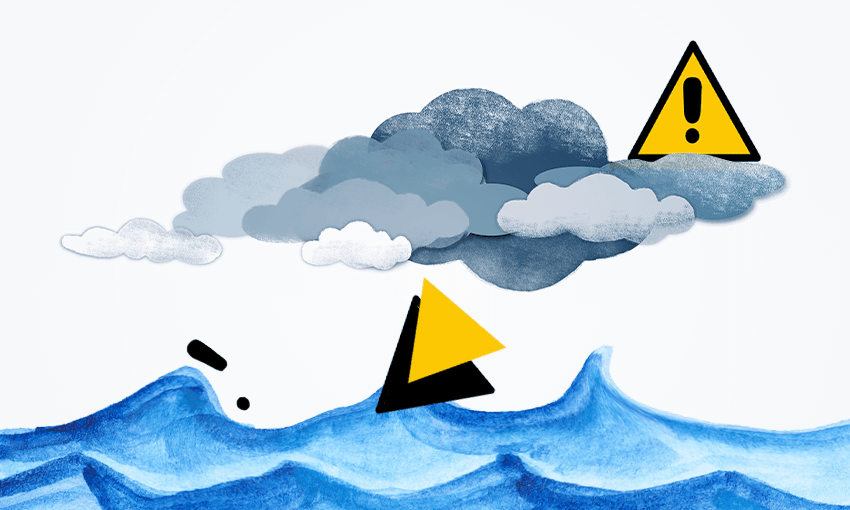A mechanical failure at sea and a cyclone are two very different scenarios, but the crisis response should be the same.
With a cyclone bearing down on the country, it’s worth learning lessons to avoid a repeat of the panic that the unexpected floods of last week created. Now that MetService and Niwa have given the warning, we have until Sunday to prepare.
There are two connected prongs to the management of dire events. Emergency management (the first responders on the ground such as police, search and rescue and fire services) and crisis management. And both require practice. Often.
I have participated in both aspects as part of a company that operated at sea. Without warning, safety specialists would set up scenarios to see how quickly the teams could mobilise. Then they kept making the event worse to test us. One such practice scenario, as it happens, started with mobilisation as a cyclone was supposedly forecasted to be bearing down on where we were in northwest Australia (it’s known as cyclone alley).
So, the answer was well known: Release any affected vessels from their moorings and head out to open waters. Then the scenario was escalated because one vessel’s mooring release mechanism failed. And then the scenario escalated to the engines and power failing. How to look after the vessel, the crew and the cargo? And who to involve? The training would get harrowing and tense.
Crisis management is all about communications and information transfer. There were squads of trained folks on a bank of phones to take calls from affected people. They were ready to inform family and colleagues of the personnel experiencing the event. Real-time information was passed onto the facility’s top brass through open lines and continuous reporting. Interview training with aggressive journalists was made available where you were taught to never apportion blame, get personal or be defensive. And to communicate with nearby operations for emergency response assistance.
Then it all actually happened. A ship suffered an engine room fire at sea, the worst possible situation. I was duty crisis manager and so was grabbed as I wheeled my cycle into the basement car park. I was told that there was a crisis on the vessel and that this wasn’t a practice. I was joined by the emergency response duty manager from the operations team and we established an open line with the ship’s captain. He was responsible for making real-time decisions on the vessel while help was mobilised from other nearby operating facilities and through an open line with my management team.
His cool head, supported by the emergency response duty manager, saved lives. He decided to use water from fire hoses on the deck of the vessel while actuating the alarm for all personnel to muster for a head count at designated stations. He waited what felt like an eternity but was actually 15 minutes – which was used for a second head count and finding out how to stop the fuel flow to the damaged engine – before allowing the engine room to be flooded with carbon dioxide to extinguish the fire.
Meanwhile choppers were in the air and boats on the way from the assisting facilities. Senior management were keeping the media up to date. Company personnel, families, media and politicians were being informed of the situation. Evacuation was started. Although there were no serious physical injuries, trauma specialists were awaiting the crew when they arrived back in Perth.
The post-event inquiry established that the turbine that drove the propulsion had suffered a critical failure where an entire rotor had come loose and come through the turbine casing (think of an aeroplane engine) rupturing the fuel line and taking out its emergency shutdown valve, so the pipe sending the fuel into the fire had to be crimped to halt the flow. It was also found that similar accidents with that brand of engine had occurred elsewhere more than once – without other users of that type of engine being informed.
An alternate reality
Our crisis resulted in no serious injury. But six months later, four Australian navy sailors died in a fire on their ship when their captain flooded the ship’s engine room with carbon dioxide to stop a fire from spreading to the rest of the ship. The captain did this before evacuating the engine room.
The fire had started in the engine room when the crew were trying to repair a broken fuel line. Five more sailors were injured as they attempted to fight their way into the engine room to rescue their colleagues.
When the fire threatened to spread to the rest of the ship, the captain abandoned rescue attempts, ordered the engine room sealed and flooded it with carbon dioxide. Five injured sailors had to be treated after the tragedy in a navy hospital for shock, burns and smoke inhalation.
It was the Australian navy’s worst peacetime disaster since 1964.
The coroner called it a needless and avoidable fire leading to deaths that should never have happened.
Warning period
These incidents are presented to demonstrate that good practice in emergency response and crisis management saves lives. The conclusion is pertinent to the management of all disasters, be they the Air New Zealand Erebus disaster or the recent floods that turned deadly, in a situation exacerbated by poor communications.
There are many lessons that can be borrowed from previous disaster. Establish teams and have specialists interact with them to come up with emergency scenarios. Invest in both crisis management and maintenance (too often a victim of cost cutting) to avoid those scenarios becoming disasters through a defect caused by poor maintenance or poor messaging. And practice, practice, practice.



